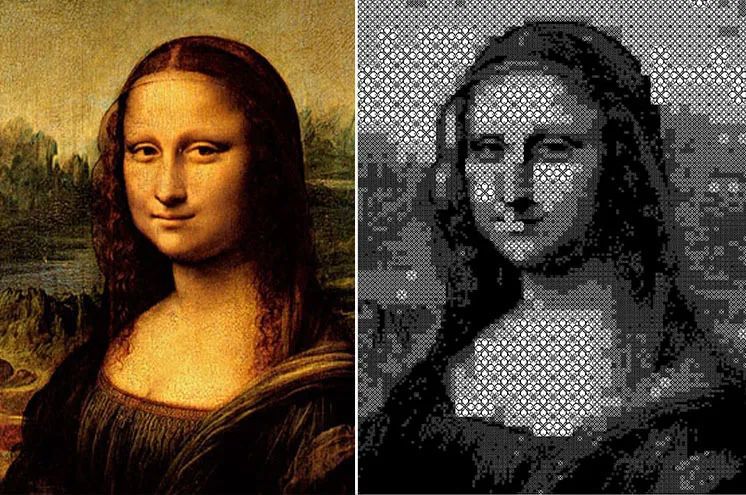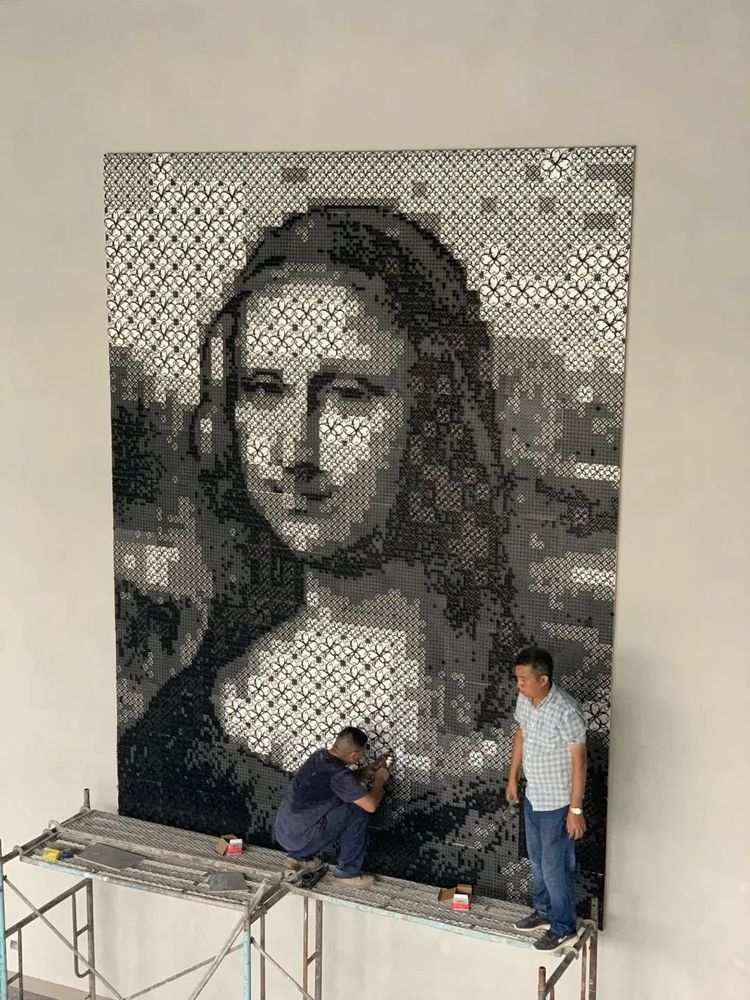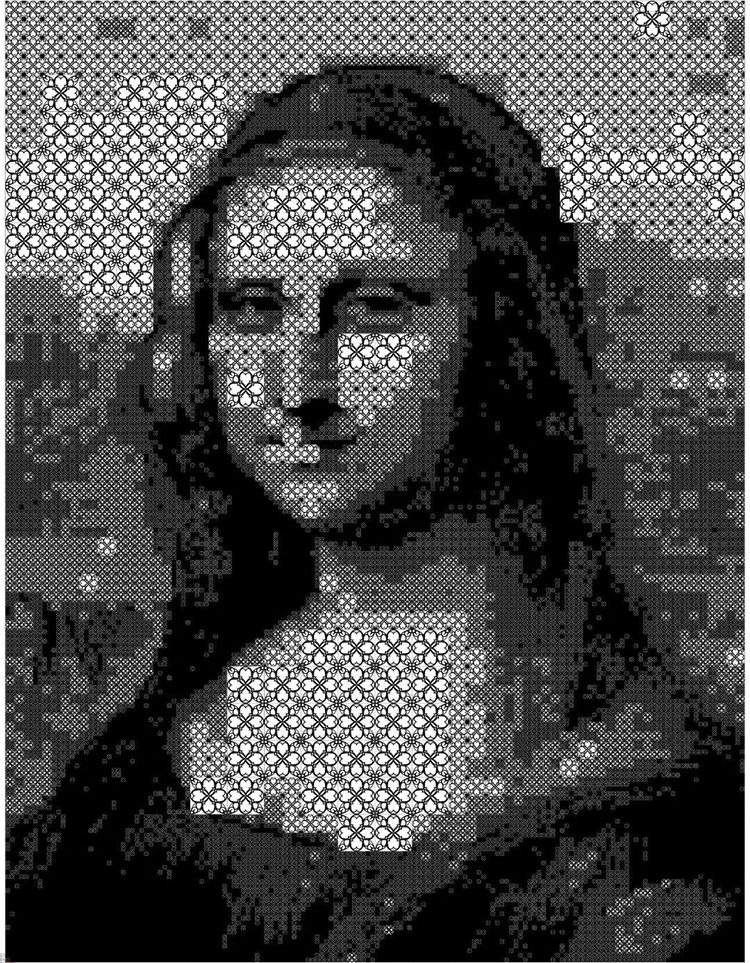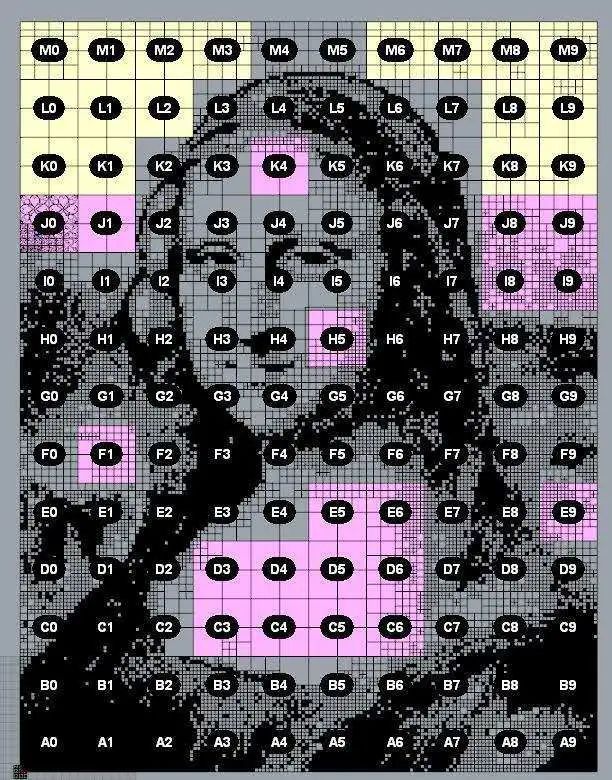To honor the incredible genius of Leonardo Da Vinci, China’s 3D Printing Cultural Museum presented one of his most famous artworks, the Mona Lisa, as a large 3D printed pixel painting. At a height of 4.5 meters and 3.5 meters wide, the commemorative piece honors the 500th anniversary of Da Vinci’s death, which was celebrated in 2019 around the world with events, exhibitions, and even fairs. The huge 3D printed grayscale Mona Lisa is being displayed in the lobby of the museum, which is located at one of the buildings of the Wisdom Bay innovation park in the Baoshan District, usually referred to as Shanghai’s first popular science park.
As originally reported by the Chinese news outlet NetEase, the new take on the Mona Lisa is an attempt to combine art with science, fully tapping into the extended value of the artwork itself and showcasing the versatility of Da Vinci’s work.

The original Mona Lisa next to the 3D printed pixeled art version (Image courtesy of NetEase/3D Printing Museum)
In order to recreate the massive Mona Lisa, museum experts had to transform the image into pixels that they could later print out and assemble. To do that, they used fractal artificial intelligence (AI) to optimize the image through automation processes, as well as computer modeling to create file formats compatible with 3D printing to produce the pixels in batches. The combination of AI and 3D printing technology represented the ideal solution to the problem of customization and helped decompose the original painting into the desired elements.
In this case, the original picture was divided into 130 pieces which, in turn, were further divided into five smaller units. Each one of the 130 pixels that make up the entire work was additively manufactured in nylon using selective laser sintering (SLS) technology. Furthermore, to help the team produce and assemble the artwork correctly, each piece had a number printed in the upper left corner.
This particularly original display also draws inspiration from the striking 1970s pixel art movement, which largely became popular after game developers began using it for game designs in the 1980s and 1990s. The granular art style has been used in many works of art, such as LEGO versions of classic and iconic pop art, while numerous artists have incorporated 3D printing technology to generate more personalized renderings of their vision, like Swiss artist Mark Bern, who turned abstract work into 3D printed highly pixelated art.
Recreations of famous artwork are not new, but through 3D printing, experts have been able to give art lovers, students, and tourists new ways to appreciate centuries-old works, even helping towards good causes, like offering the visually impaired a unique opportunity to experience masterworks by creating three-dimensional blueprints of two-dimensional images.

The 3D printed Mona Lisa being assembled at the museum lobby (Image courtesy of NetEase/3D Printing Museum)
Since the Mona Lisa has historically been a crowd-drawer at the Louvre, we can expect this new rendering of the painting to attract a lot of attention and wide interest. As the latest addition to the 3D Printing Cultural Museum, the large pixel artwork will share the space with thousands of creations of 3D printing technology across a range of industries and fields of design, from 3D printed nylon coffee tables and lamps to ceramics, even jewelry and metal artworks like a moon and lotus seat made using SLM.
Built upon the former site of Shanghai’s No. 3 wool textile mill in the north Baoshan District in 2017, the museum has been transformed into the city’s first scientific and cultural complex featuring 3D printing technologies. Housing over a dozen artists’ workshops along with over 300 global companies engaged in 3D printing, intelligent micro-manufacturing, virtual reality, augmented reality, and artificial intelligence robotics, the site is much more than a place for tourists and visitors to explore. By purchasing 3D printing machines and other technology, the park has become a go-to site for startup companies to print out their designs. The museum doors are also usually open to companies that wish to introduce new technologies to clients. Asides from the exhibition hall, the museum is complete with a 3D printing research and scientific center, creative gallery, 3D sky garden, coffee shop, and 3D children’s activity center.

The 3D printed Mona Lisa showcased at the museum lobby (Image courtesy of NetEase/3D Printing Museum)
By showcasing the pixelated Mona Lisa, the museum is exploring how to leverage 3D printing technology to enhance the art industry, moving away from conventional viewing experiences and incorporating a different take on a widely recognized work. Museum experts tried to imitate in black and white Da Vinci’s s design and imperceptible transitions between light and shade that led to the unique coloring and optical illusions that continues to draw so much attention to the enigmatic smile of the subject in the painting. The pixelated accomplishment will make for a different and memorable experience to the visitors of the museum and a step forward for the Chinese 3D printing community as it continues to explore the capabilities of the technology.
Subscribe to Our Email Newsletter
Stay up-to-date on all the latest news from the 3D printing industry and receive information and offers from third party vendors.
You May Also Like
3D Printed Heat Spreader Could Improve Efficiency of Electronics
The low-hanging fruit for decarbonization has long been improving the efficiency of existing systems, hence the justification for LED lights and ENERGY STAR certified appliances. While such minor moves are...
3D Printing News Unpeeled: Marine Gearboxes, 3D Printed Motors and $1.7 Million in Seed Funding
UK based Equipmake just released their Ampere-220 e-axle system. The system, which is meant for high performance electric cars, was similar to one released on the Ariel HIPERCAR. It has...
CEAD Unveils 36-Meter-Long 3D Printer for Abu Dhabi’s Al Seer Marine
CEAD, a Dutch original equipment manufacturer dedicated to large-format 3D printers, has unveiled what it claims to be the world’s largest robotic arm-based 3D printer. At 36 meters long and...
3D Printed Biocomposites Could Help Reduce Marine Plastic Pollution
Concerns about the impact of plastic litter and microplastics in the oceans are at the forefront of environmental study. For decades, the marine environment has suffered from the degradation of...





































